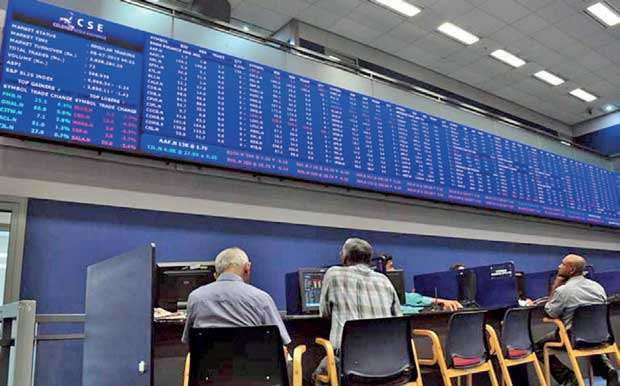30 May 2018 - {{hitsCtrl.values.hits}}

The Colombo Stock Exchange (CSE) yesterday said investment flows from the Scandinavian region to Sri Lankan stocks have made a noteworthy improvement in recent years, where inward investments have grown by 39 percent per annum (CAGR) since 2013.
According to a CSE statement, Scandinavian countries have collectively invested Rs.8.2 billion in local equities year-to-date, which amounted to 23 percent of the total foreign purchases during the period.
Sweden has bought local stocks worth Rs.2.4 billion so far this year, which according to CSE marks a new high for investment flows into the stock market from that country.
Lankan stock purchases by Norway has recorded an all-time high, as the country made Rs.7.6 billion worth of purchases in 2017, establishing a new record.
The CSE said along with Norway, 10 other counties established new all-time yearly foreign purchase records in 2017.
Mirror Business last week exclusively reported that Norway’s giant sovereign wealth fund, Norwegian Government Pension Fund Global, had invested US $ 85.2 million in Sri Lankan listed equities as at the end of last year.
The fund, which is managed by Norges Bank Investment Management (NBIM), the asset management unit of Norway’s central bank (Norges Bank), has positions in 14 Sri Lankan listed firms, with top three holdings in Hatton National Bank PLC, Dialog Axiata PLC and Hemas Holdings PLC.
Meanwhile, CSE said the inflows recorded within the first five months of this year have bettered the previous high of Rs. 1.6 billion recorded in 2014.
Commenting on emerging investment flows from non-traditional markets, the Head of Market Development at CSE Niroshan Wijesundere said, “The stock market has seen encouraging foreign investor interest since 2017, particularly from traditional markets. The emergence of non-traditional segments such as the Scandinavian region in particular offers further encouragement, and highlights the value proposition the market offers at present and its ability to attract the interest of investors from around the world.”
“The sustainable way forward for the Sri Lankan stock market is to consolidate on foreign investment strongholds while also actively pursuing new countries that are indicating positive investment trends in Sri Lanka, and this is set to be a main focus in our international investment promotion strategy going forward,” he added.
Meanwhile, CSE’s benchmark All-Share Price Index (ASPI) has indicated relative stability in 2018 amid a noteworthy overall decline in frontier and emerging markets.
The MSCI Emerging Markets Index, which captures large and mid-cap representation across 24 emerging market countries, has declined in 2018 by 1.88 percent, while the MSCI Frontier Markets Index, which captures large and mid-cap representation across 29 frontier markets, has declined by 8.37 percent, indicating the downturn markets have faced in 2018.
The CSE ASPI is presently in positive territory for 2018, with a positive year-to-date return of 1.32 percent.
The ASPI has remained positive during a period where certain main indices of other Asian markets have indicated negative returns.
“A feature of the Sri Lankan stock market has been that, our market is largely not sensitive to developments in global markets, which has often worked to our advantage, especially when attracting fund allocations by frontier markets focused on foreign portfolio investors, as it gives them an opportunity to diversify.
This unique feature and attractive valuations of the market offers at present a market P/E valuation of 10.83, which is significantly lower than our regional peers, and is likely to further capture the attention of portfolio investors who are in the lookout for diversification opportunities,” Wijesundere said.
18 Nov 2024 10 minute ago
18 Nov 2024 45 minute ago
18 Nov 2024 46 minute ago
18 Nov 2024 1 hours ago
18 Nov 2024 1 hours ago